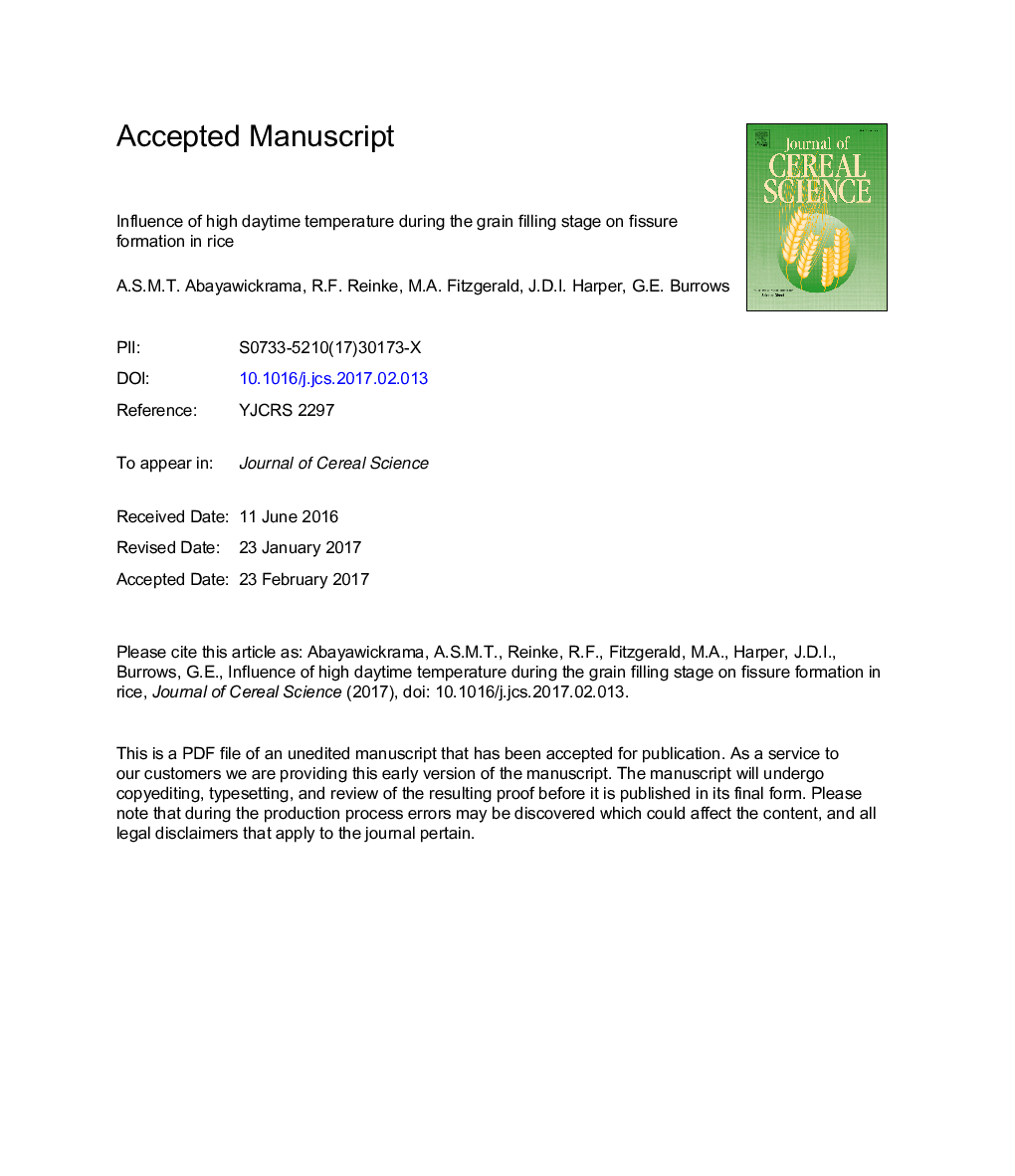| Article ID | Journal | Published Year | Pages | File Type |
|---|---|---|---|---|
| 5762467 | Journal of Cereal Science | 2017 | 29 Pages |
Abstract
High daytime temperatures during the grain filling stage in rice have negative impacts on milling quality traits. In this study, we used growth chambers to evaluate the influence of high daytime temperature (33 °C) during grain filling, together with grain moisture content at harvest (26%, 18% and 15%), on grain fissure formation. Varietal susceptibility to fissure formation was also evaluated by exposing grains to high temperature at different grain filling stages (milky, dough, maturing). Two fissure resistant varieties: Cypress (long-grain) and Reiziq (medium-grain) and susceptible varieties: YC53-00-7 (long-grain) and Baru (medium-grain) were compared. The average head rice yield (HRY) of Cypress declined from 62.7% at 25 °C to 53.5% at 33 °C, while Reiziq declined from 56.2% (25 °C) to 47.4% (33 °C). Both were significantly higher than the HRY of YC53-00-7 (39.2% and 24.9%) and Baru (39.3% and 31.7%) at 25 °C and 33 °C, respectively. When grains were drier at harvest (15% cf. 26%) there was a greater reduction in HRY. When the four varieties were exposed to high temperature, the highest average reduction of HRY was recorded at 21 days after heading. It is important to choose an optimal sowing date to avoid coincidence of the final grainfilling stage with high temperatures, in order to minimize milling quality losses.
Keywords
Related Topics
Life Sciences
Agricultural and Biological Sciences
Agronomy and Crop Science
Authors
A.S.M.T. Abayawickrama, R.F. Reinke, M.A. Fitzgerald, J.D.I. Harper, G.E. Burrows,
